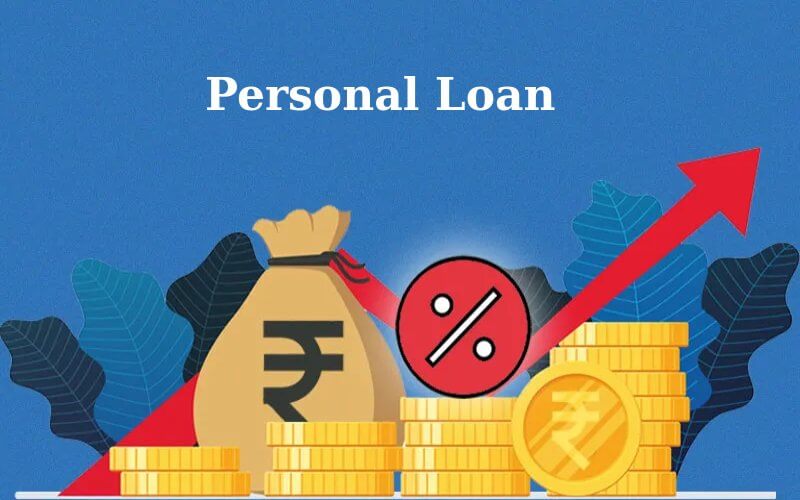How Do Personal Loan Interest Rates Change from Short Loans to Longer Ones?

Personal Loans come in handy when people need urgent funds for big expenses like a wedding, home repairs, higher education, medical emergency, or foreign vacation. When someone takes out a Personal Loan, they should repay it in EMIs over flexible timelines, usually from 12 to 48 months. Borrowers can choose a short tenure to pay it off quickly or stretch the payments over a longer period. However, before finalising the loan tenure, it’s important to understand how the Personal Loan interest rate changes from short loans to longer ones. Here are a few essential pointers to understand how different tenures work.
How Does Loan Repayment Work?
When an individual borrows a Personal Loan, they have to repay it to the lending institution within a fixed tenure. Failing which, they have to pay extra penalties and charges on top of the outstanding loan balance. Non-repayment or delayed loan repayment indicates poor credit management skills, leading most borrowers into debt traps.
Generally, a Personal Loan includes a scheduled repayment process in the form of EMIs or Equated Monthly Instalments. Each EMI includes both the personal loan interest rate and principal components, which the borrower pays within a fixed tenure in pre-fixed installments. The EMI is due each month on a specified date until the term ends and the borrower repays the debt completely. However, the EMI does not contain both components in an equal percentage. The interest component is bigger in the initial months of the tenure and gradually decreases as the principal component increases.
Tenure Options
Personal Loan repayment terms typically range from 12 to 48 months, or sometimes shorter or longer, depending on the NBFC’s policy. A longer loan tenure leads to smaller monthly EMIs but a higher interest outgo. Those looking to save on interest must opt for a shorter term, even if it makes the repayment plan a bit aggressive. On the other hand, those with a tight monthly budget can opt for a longer tenure, as it reduces the EMI amount and makes repayment easier.
Monthly EMIs – Why Lower Means Longer?
When borrowers opt for a short repayment tenure, they pay off the debt sooner without having it hanging over their heads for long. However, it comes at the cost of bigger EMIs than loans with longer repayment periods. That is because they need to repay the loan in fixed EMIs spread across the number of months in the loan tenure.
A longer repayment tenure usually means lower EMI payments, giving them more time to repay the loan. Paying down the debt in a shorter period increases the EMI amount, impacting the room left in the monthly budget for other expenses and financial obligations. That is why opting for a longer repayment term eases the financial strain for most borrowers.
Pros and Cons of Short-Term Loans
Getting an instant personal loan approval with a shorter term has several pros, including the following:
- Reduced Interest Outgo: Since the borrower pays off the loan quickly, interest outgo is less on loan with a short tenure.
- Faster Repayment: Shorter term helps achieve the goals of borrowers who want to repay their loan as quickly as possible.
- Availability of Smaller Loan Amounts: Those who do not require large sums of money can opt for a short-term Personal Loan and repay it quickly without stressing their budget.
Short-term Personal Loans have some drawbacks as well, including these:
- High-Interest Rates: Most borrowers charge a higher Personal Loan interest rate on short-term loans than long ones. Do the calculations using a personal loan EMI calculator to see the difference between short and long-term loan interest rates.
- Only a Short-Term Funding Solution: Rather than providing long-term financial support, a short-term loan is more appropriate to cover immediate cash needs.
Pros and Cons of Long-Term Loans
Long-term loans have several benefits, including the following:
Smaller Monthly Payments: Since the lending institution spreads out the repayment over a longer period, the monthly EMIs will likely become smaller and more manageable than those of a short-term loan.
Larger Sanction Amounts: Long-term Personal Loans make it easier for applicants to secure bigger loan sanctions than short-term loans. That is because the smaller EMIs are convenient to repay, reducing the risk and making the lending institutions confident of timely repayment.
Credit-Building Potential: Conveniently paying small EMIs on time repays the loan on time, giving borrowers a chance to improve their credit score. A longer term gives them more time to pay EMIs consistently and build their credit score.
Before opting for a longer term, consider these drawbacks as well:
More Expensive: Short-term loans have higher interest rates, but borrowers often pay more over the long term since they make interest payments for more months. Again, an EMI calculator helps to see which repayment option saves more money.
Financial Strain for Longer: Those finding it difficult to repay their debt may experience more financial stress for longer.
Making the Final Choice
Choosing the right repayment timeline varies depending on the borrower’s financial situation, budget flexibility, monthly affordability and financial goals. Before deciding between a short and long-term Personal Loan, carefully consider the pros and cons of both and see which works best in a particular situation.
Before taking a new loan, borrowers should evaluate the monthly EMIs that fit into their budget. With a short-term loan, monthly EMIs are bigger, while they are smaller with a long term, allowing more financial flexibility. However, the Personal Loan interest rate may increase, making repayment more burdensome. Therefore, after getting instant Personal Loan approval, use a Personal Loan EMI calculator available on the websites of top lending institutions to calculate your EMIs and plan your repayment accordingly.
